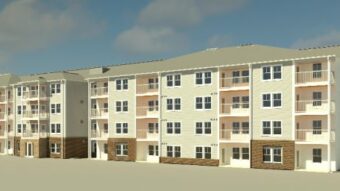As is commonly known, rental prices experience fluctuations throughout the seasons, with November typically witnessing the most significant decline. This year is no different, as prices across the nation have fallen by 1% this month, marking the second consecutive slow winter for the rental market. Presently, rents have decreased by $32 (2.4%) from their peak in August.
As the holiday season approaches, filling vacancies becomes more challenging, providing renters with increased bargaining power in lease negotiations. In certain regions such as Austin, TX; Atlanta, GA; and much of the San Francisco Bay Area, individuals securing new leases today can expect reductions of over 5% compared to signing during the summer.
Now, turning our attention to Chicago.
Based on the most recent report by Apartment List, the median rent in the city fell by 1.1% over the course of November and has now increased by a total of 2.1% over the past 12 months. Chicago’s rent growth over the past year has fallen behind the state average (3.4%) but has outpaced the national average (-1.1%).
Overall rent growth this year is also pacing below last.
Eleven months into the year, rents have risen only 3.3%, which is a much slower rate of growth compared to what the city was experiencing at this point last year. From January to November 2022, rents had increased 7%.
Yet this doesn’t imply that rent is inexpensive. According to Apartment List, Chicago remains the 47th most expensive large city in the U.S.
Citywide, the median rent currently stands at $1,336 for a one-bedroom apartment and $1,450 for a two-bedroom. Across all bedroom sizes (i.e., the entire rental market), the median rent is $1,438.
For comparison, the median rent across the nation as a whole is $1,149 for a one-bedroom, $1,317 for a two-bedroom, and $1,340 overall, based on the report. The median rent in Chicago is 7.4% higher than the national.




